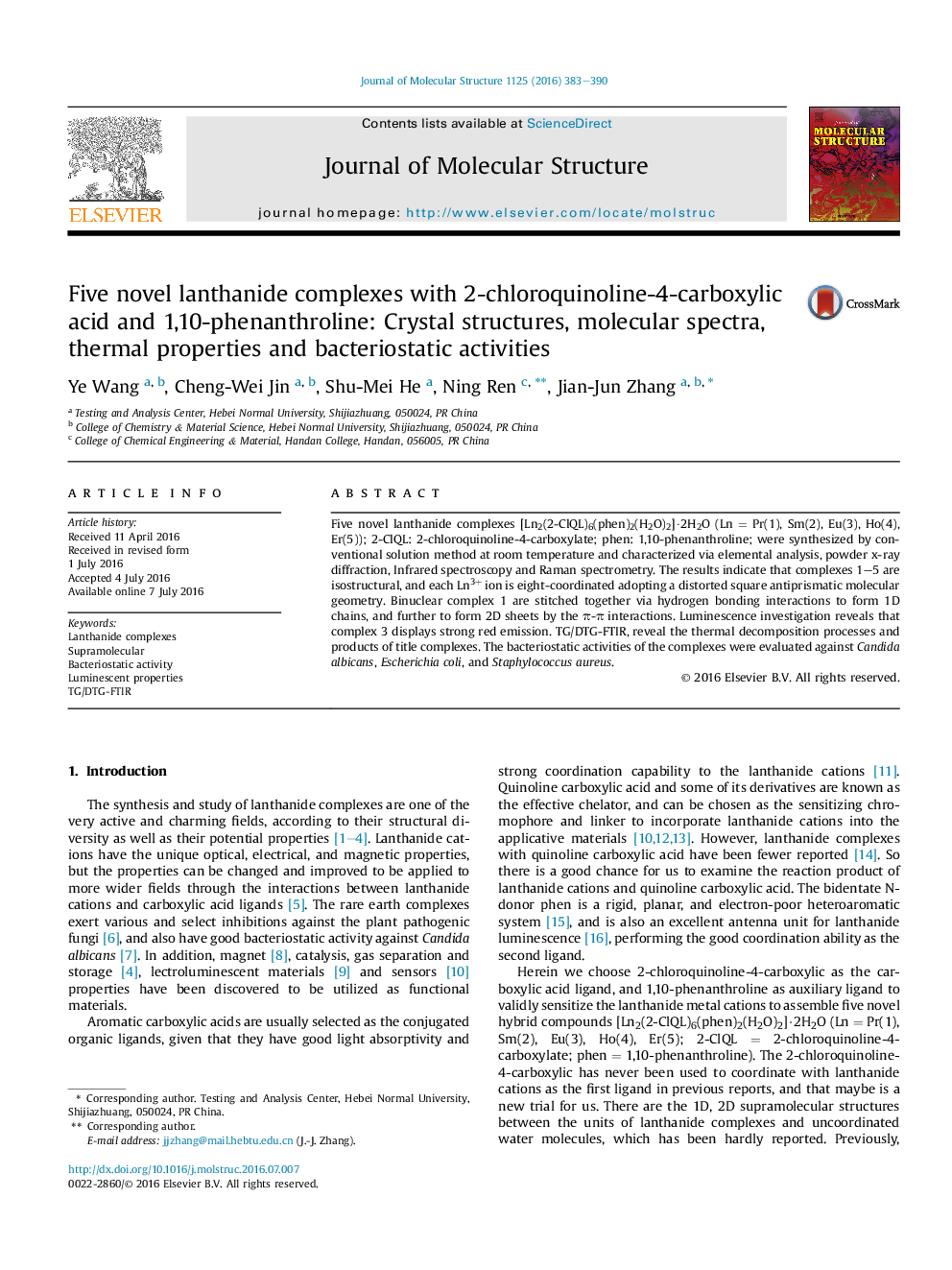| Article ID | Journal | Published Year | Pages | File Type |
|---|---|---|---|---|
| 1400952 | Journal of Molecular Structure | 2016 | 8 Pages |
•Five novel lanthanide complexes were synthesized.•The title complexes were characterized via Infrared spectra and Raman spectrometry.•Complexes form 1D, 2D structures via hydrogen bonding and π-π interactions.•Thermal decomposition mechanisms of complexes are studied by TG/DSC-FTIR.•Luminescence investigation reveals that complex 3 displays strong red emission.
Five novel lanthanide complexes [Ln2(2-ClQL)6(phen)2(H2O)2]·2H2O (Ln = Pr(1), Sm(2), Eu(3), Ho(4), Er(5)); 2-ClQL: 2-chloroquinoline-4-carboxylate; phen: 1,10-phenanthroline; were synthesized by conventional solution method at room temperature and characterized via elemental analysis, powder x-ray diffraction, Infrared spectroscopy and Raman spectrometry. The results indicate that complexes 1–5 are isostructural, and each Ln3+ ion is eight-coordinated adopting a distorted square antiprismatic molecular geometry. Binuclear complex 1 are stitched together via hydrogen bonding interactions to form 1D chains, and further to form 2D sheets by the π-π interactions. Luminescence investigation reveals that complex 3 displays strong red emission. TG/DTG-FTIR, reveal the thermal decomposition processes and products of title complexes. The bacteriostatic activities of the complexes were evaluated against Candida albicans, Escherichia coli, and Staphylococcus aureus.
Graphical abstractFigure optionsDownload full-size imageDownload as PowerPoint slide
